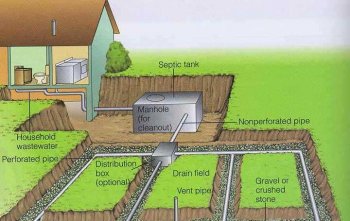explain how a septic system works
In an anaerobic septic system there is little to no oxygen. Then the liquid wastewater goes through underground pipes into.
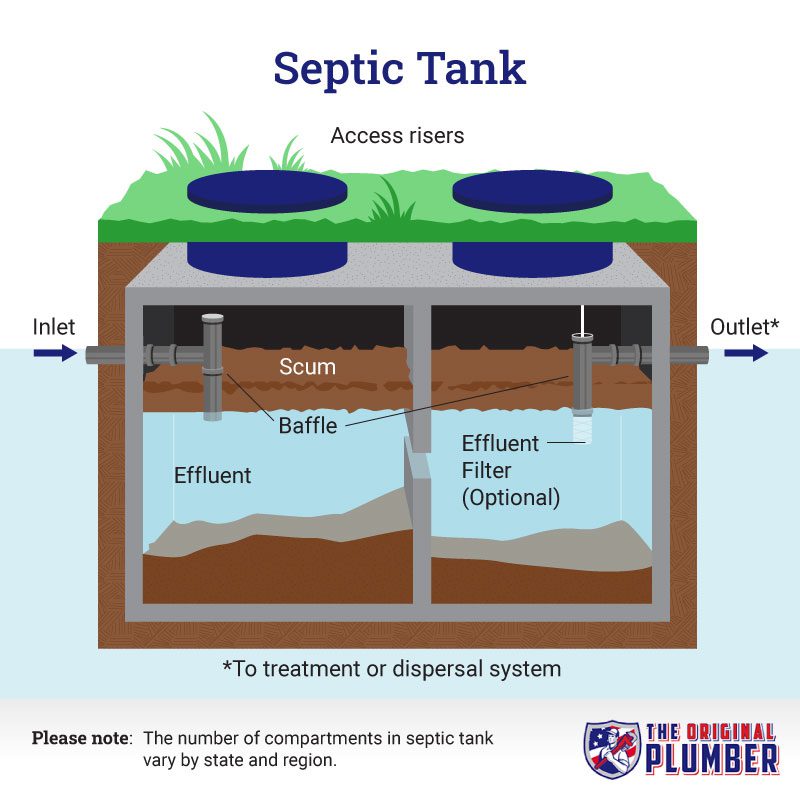
How Does A Septic Tank Work Learn How Septic Systems Treat Wastewater
How do septic systems work.

. An underground system for distribution into the soil final treatment and reintroduction of wastewater into the environment effluent comes from. As the wastewater sits fats oils grease and soap float to the surface scum. All water runs out of your house from one main drainage pipe into a septic tank.
Then the oils from the waste float to the top to form the scum. Household wastewater enters the septic tank through the inlet. When you have a septic system water runs out of your house from one main drainage pipe into a septic tank.
Septic systems constructed before 1975 in King County usually have single-compartment tanks. The septic tank is a buried water-tight container usually made of concrete fiberglass or polyethylene. Some live in the tank but most do their work in the drain field.
Soil-based systems discharge the liquid known as effluent from the septic tank into a series of perforated pipes buried in a. Here are some videos that explain how your system works. All the grease and oil that is sent through the drainpipe will wind up in the scum layer which sits on top.
Wastewater flows into the tank at one end and leaves the tank at the other. Septic systems treat wastewater from household plumbing fixtures toilet shower laundry etc through both natural and technological processes. A septic system consists of a drainage pipe a septic tank and a drain field.
Those built since 1975 usually have two-compartment tanks. Pipes that carry wastewater to the septic tank. The excess treated water from the septic tank flows away into the surrounding soil area via the drain field or soakaway.
Watery waste called effluent fills most of the tank. A septic tank is simply a big concrete or steel tank that is buried in the yard. The tank digests organic materials and separates solids oils and grease from the wastewater.
A conventional septic system will include a distribution box to help distribute the wastewater evenly among the trenches to ensure maximum wastewater to soil contact. Specifically this is how a typical conventional septic system works. Most people are familiar with anaerobic systems as they are the more common variety so in this article we will explain how aerobic septic systems work in order to help you keep yours in good shape.
The septic tank digests organic matter and separates floatable matter eg oils and grease and solids from the wastewater. Sewage from all plumbing fixtures drains into the septic tank where heavy solids settle to the. When the wastewater enters the tank it will settle to the bottom in three layers.
The job of the septic tank is to partially decompose lighter solids and do the majority of the processing and. Septic Installation Repair Tank Pumping Title 5 Inspections. All liquid effluent human sewage and wastewater flows through the household plumbing system out of the home via the main drain drainage pipe and the effluent enters into the septic tank via the inlet pipe.
The tank might hold 1000 gallons 4000 liters of water. A typical septic system consists of a septic tank and a drain field or soil absorption field. In the septic tank bacteria that live without oxygen break down a lot of the organic matter.
An effluent treatment system. These systems help to trickle out so that your tank largely contains any solids that remain. Its job is to hold the wastewater long enough to allow solids to settle down to the.
These are called septic tanks. Pumping a Septic Tank Through a Riser. A septic tank will be connected with two pipes for inlet and outlet.
Septic tanks will have a filter or outlet pipe preventing the sludge or scum escaping into the drain field area and contaminating the effluent water. The whole system is designed to keep bacteria healthy and busy. At the bottom is the sludge layer which consists of substances that are heavier than water.
A septic system works to allow you to efficiently and affordably manage waste on-site. Solid materials from the wastewater. It is kept here long enough so that the solid and liquid waste is separated from each other.
The word aerobic refers to the amount of oxygen being introduced into a system. It can also call the drain field. Onsite wastewater treatment systems decentralized wastewater treatment systems cluster systems package plants on-lot systems individual sewage disposal systems and.
Find out how a septic system works along with all of its components as well as any common problems that may occur without proper care. Plumbing from the house. This water displaces an equal amount of effluent in the septic tank that flows to the drainfield from the septic tank and then inevitably soaks into the ground.
The solids in the waste will settle and naturally sink to the bottom where they form the sludge. The second pipe is the outlet pipe. A water-tight container for collection and initial treatment of wastewater.
How a septic tank works is fairly simple. A typical septic system consists of a septic tank and a drainfield or soil absorption field. The inlet pipe is used to transport the water waste from the house and collect it in the septic tank.
The tank looks something like this in cross-section. A system typically has 3 parts. In between is the.
All waste flows to the septic tank. Then the liquid wastewater called. When a toilet is flushed in a house the wastewater travels through the inlet pipe from the house into the septic tank.
Anaerobic bacteria begin breaking down the organic material in the effluent. Septic systems are also called. Soil-based systems discharge the liquid known as effluent from the septic tank into a series of perforated pipes buried in a leach field chambers or other special units designed to slowly release the effluent into the soil.

How Does A Septic System Work Avoid Septic System Problems

7 Steps For How Your Septic Tank System Works Solid Rock Contracting
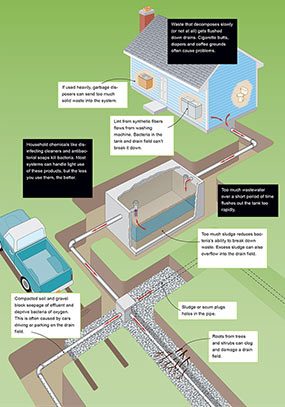
How Does A Septic Tank Work Diy Family Handyman

How Does A Septic Tank Work Diy Family Handyman

How A Septic System Works And Common Problems

What Is Septic Tank Types And How Does It Work Engineering Choice

What Is A Septic Tank How Does It Work D Tox
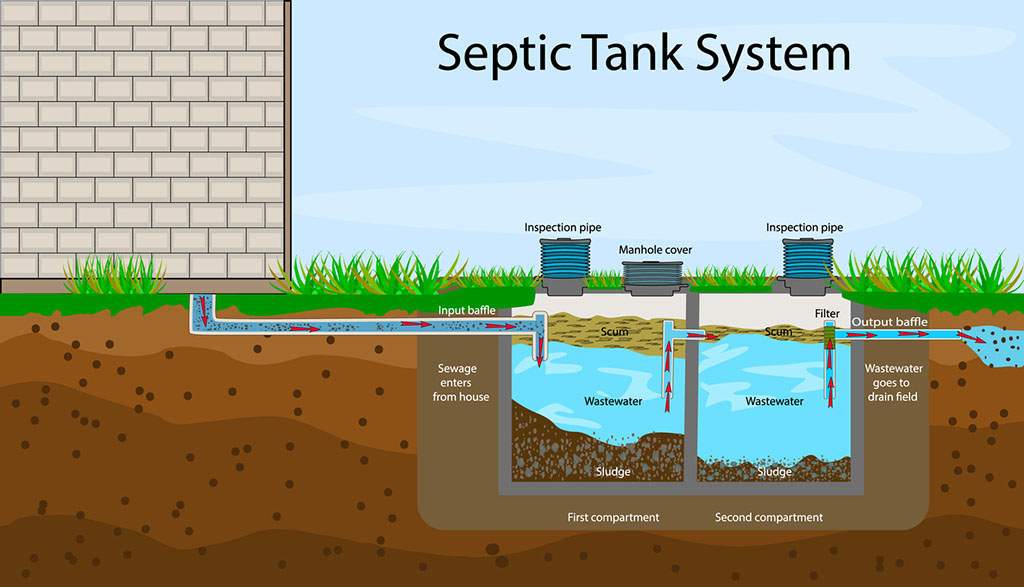
How Does A Septic System Work All Your Questions Answered
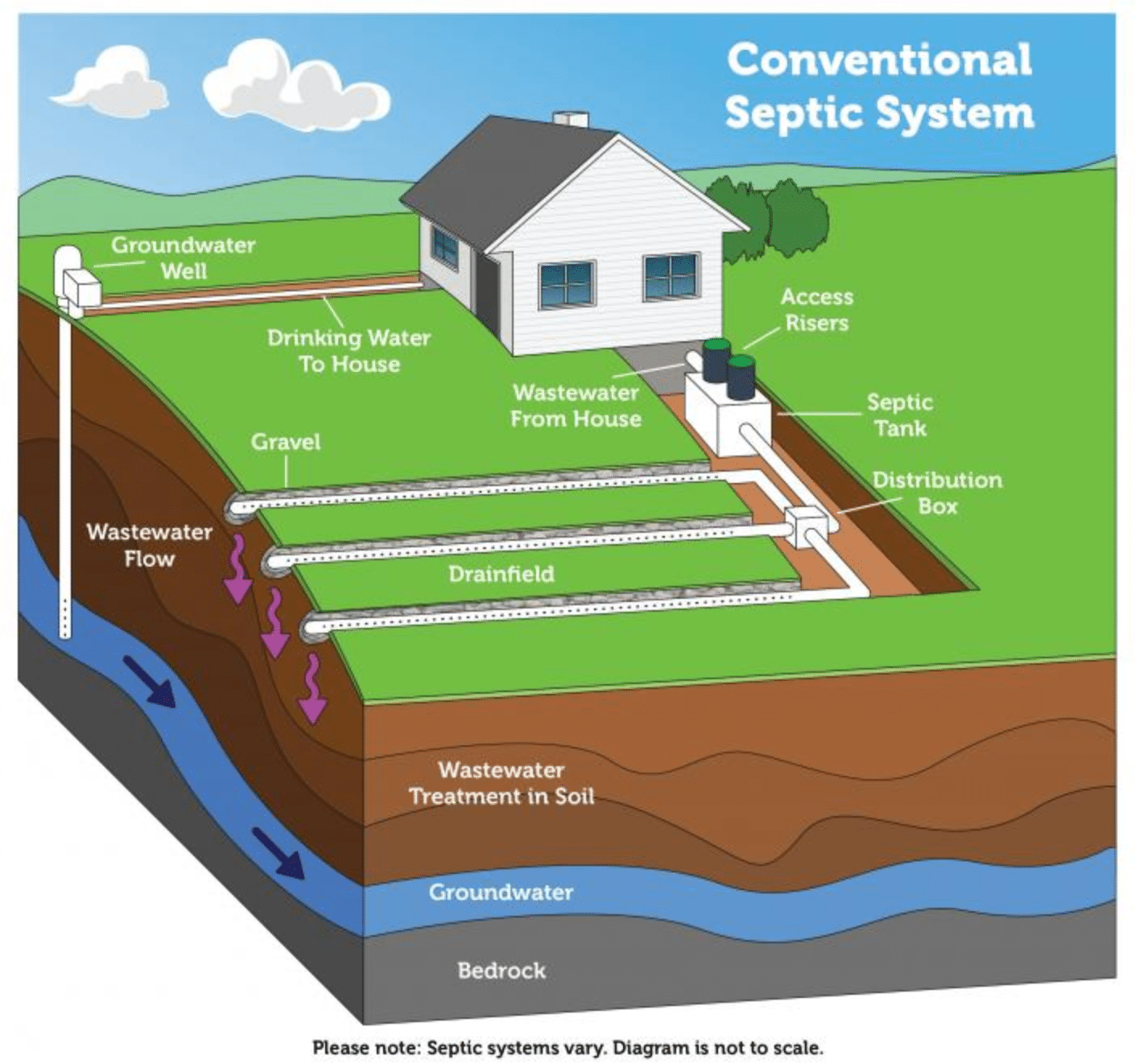
Septic System Types In Florida Martin Septic Service

Septic System Basics Septic System Septic Tank System
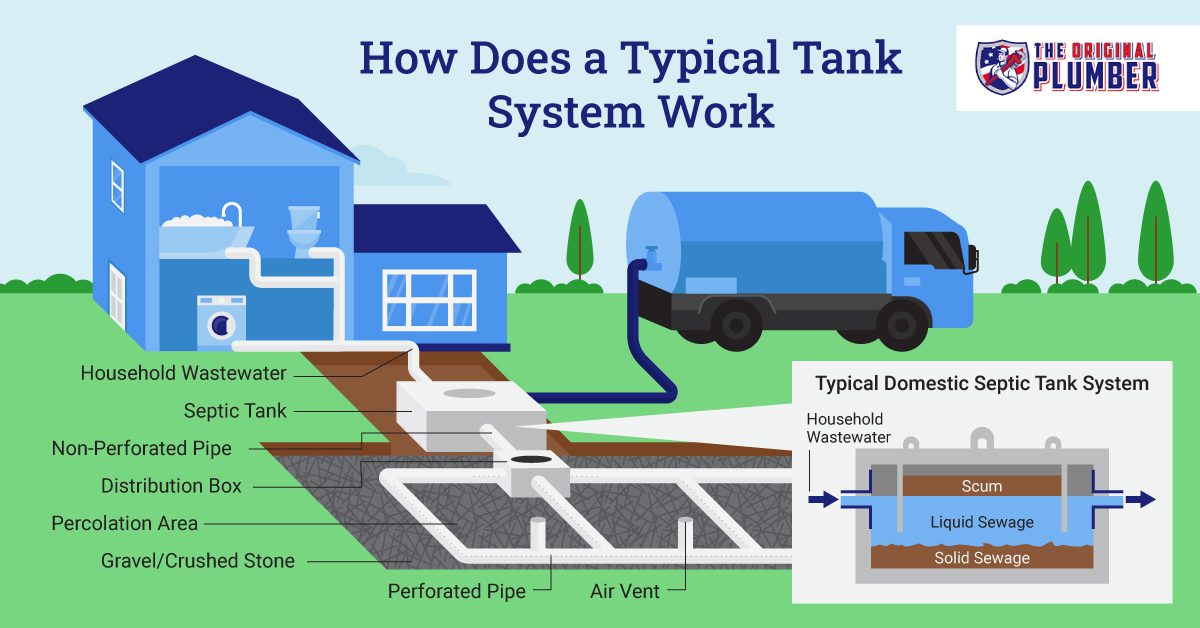
How Does A Septic Tank Work Learn How Septic Systems Treat Wastewater
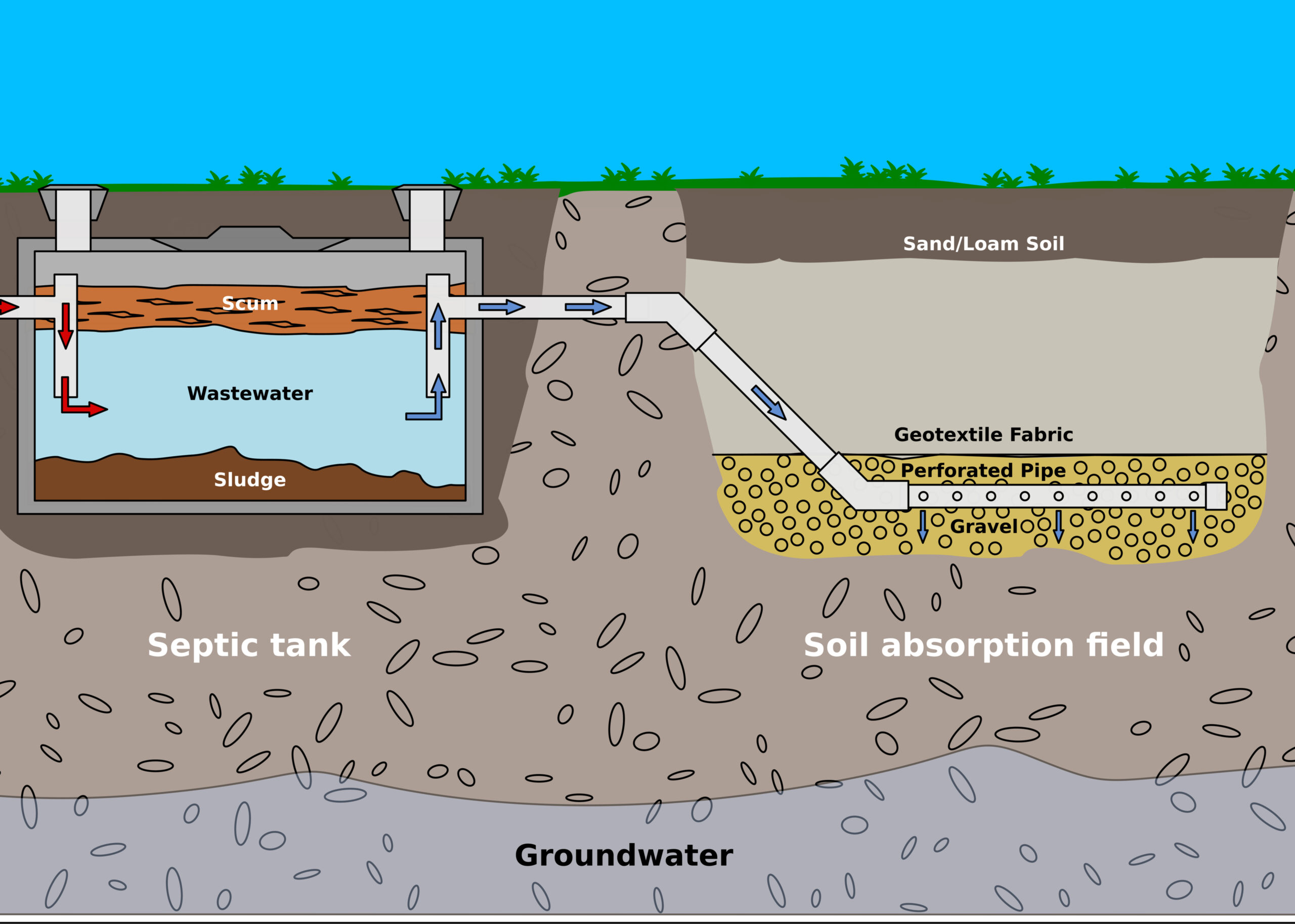
How Does My Septic System Work Peak Sewer

How A Conventional Septic System Works Tangent Company Llc
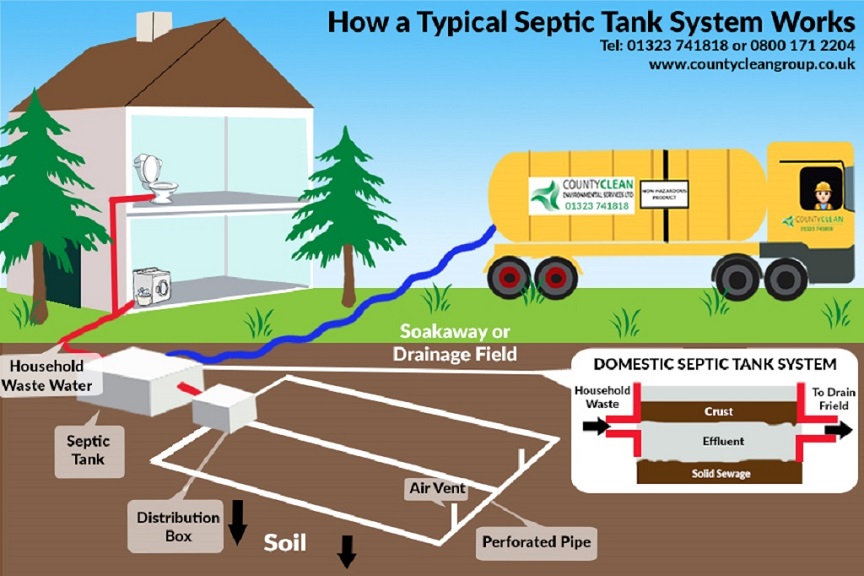
Septic Tanks What You Need To Know Inforgraphic

Tarif Plomberie Odeur Fosse Septique Dans La Maison Septic Tank Septic Tank Design Septic Tank Problems

What Is A Septic Tank How Does It Work D Tox

How Does A Septic Tank Work Learn How Septic Systems Treat Wastewater
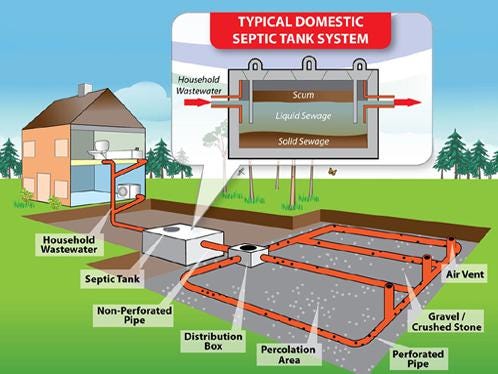
How Septic Tanks Work And When To Empty Them By Waste Disposal Hub Waste Disposal Hub Medium
